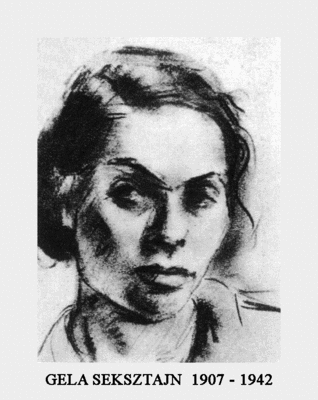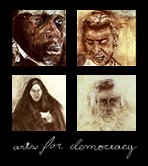
From the article
Tank Is Canvas For Iraqi Kids, By Neal Rubin The Detroit News, June 8, 2003
"The canvas weighs 44 tons and it used to fire shells. Until early April it was a tank, a Russian-made t55. Iraqi soldiers used it to defend a city called Kirkuk, in their own inept and overmatched way, and our guys turned it into a paperweight.
Then, three or four weeks ago, a small army of kids went after it with paintbrushes. Now, John Gattorn will tell you, it's a piece of art and a fragment of hope -- a charred and rusty fragment, sure, but in a war zone you don't always get to polish your symbols.
Gattorn, 33, grew up in Grosse Pointe Shores. In more placid times, he was an art student, and he liked to drive into Detroit to keep tabs on the Heidelberg Project.
The Heidelberg Project was artist Tyree Guyton's attempt to drive out a pack of drug dealers and turn a raggedy east side block into something fresh and optimistic, one polka dot at a time. Slapping anything from swirls of paint to dolls or shoes onto houses, garages and trees, he inadvertently made himself and Heidelberg Street famous.
A decade later, with the original Heidelberg largely bulldozed and Gattorn working for the U.S. Agency for International Development (USAID), he came across something near the northern Iraqi oil fields that reminded him of home:
The tank.He stopped and took pictures, then loaded them into his computer and sent them to the director of the Heidelberg Project, Jenenne Whitfield. She forwarded them to someone who gave them to me, and because the world has become a minuscule place, I was able to tap a few words into my computer and pester Gattorn for details.
The t55 sits outside Kirkuk, an Arab city before the war, at the entrance you'd use if you were driving from Suleymania, a Kurdish city..."
Read the rest here.
 Wikipedia: Vasili Vasilyevich Vereshchagin (Russian: Василий Василиевич Верещагин 1842 - 1904) was the most famous Russian battle painter and the first Russian artist to be widely recognized abroad. The graphic nature of his realist scenes led many of them to never be printed or exhibited...Read more here.
Wikipedia: Vasili Vasilyevich Vereshchagin (Russian: Василий Василиевич Верещагин 1842 - 1904) was the most famous Russian battle painter and the first Russian artist to be widely recognized abroad. The graphic nature of his realist scenes led many of them to never be printed or exhibited...Read more here.








